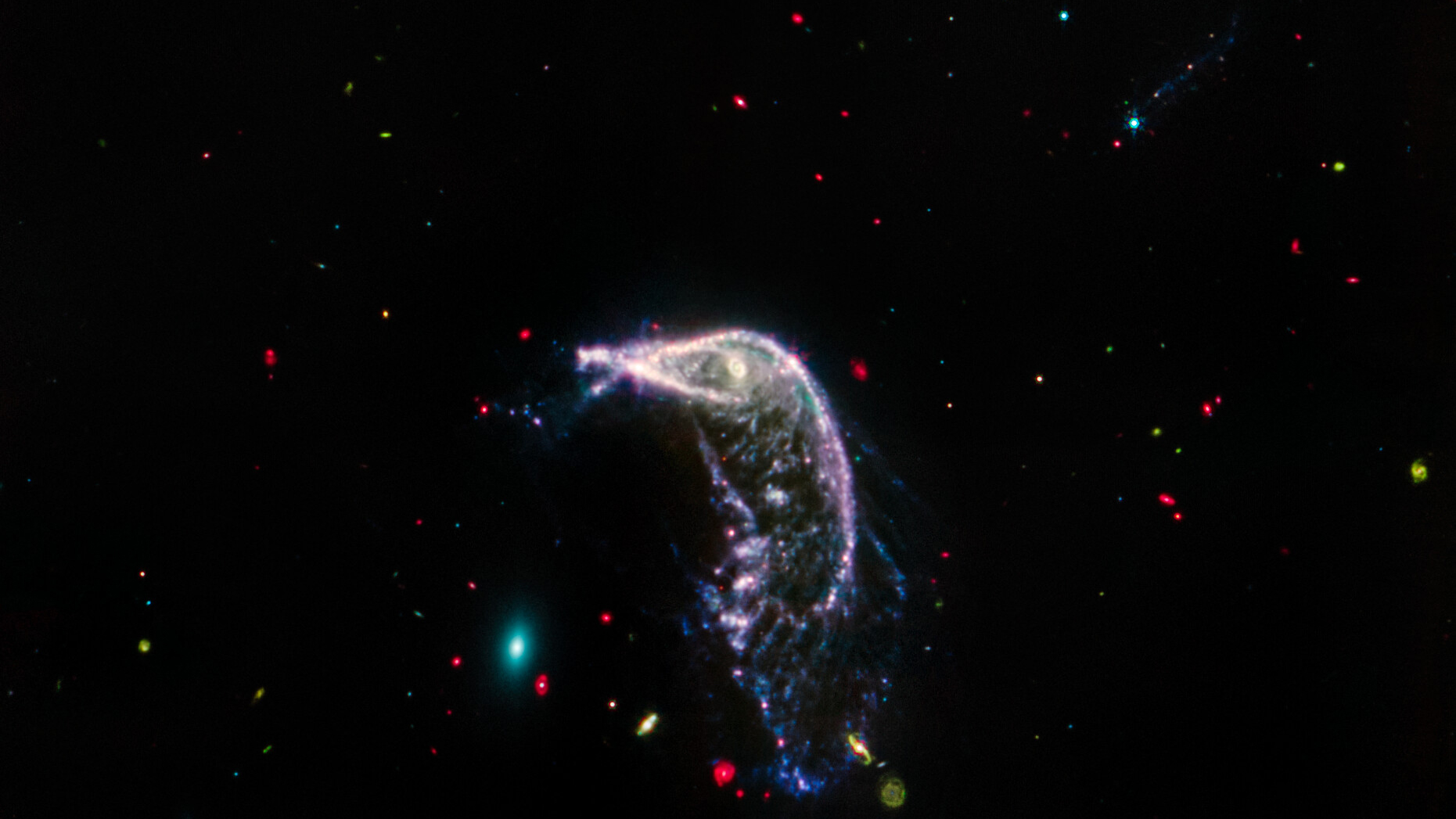
The ongoing relationship between the two galaxies, the Penguin and the Egg, was first set in motion between 25 and 75 million years ago.
The Penguin, individually catalogued as NGC 2936, will continue to guard its Egg, NGC 2937, for the next few hundred million years, before they eventually engulf each other to become a single galaxy.
NASA released the image July 12, to commemorate two years since the launch of its James Webb Space Telescope by President Biden and Vice President Harris. In its short life, the Webb space telescope has been responsible for some incredible discoveries, and advancing our knowledge of the universe.
The telescope has also captured some of the most incredible images with its talent for capturing infrared light, beyond what our human eyes can detect.
Using its NIRCam (Near-Infrared Camera) and its MIRI (Mid-Infrared Instrument), the telescope has brought us such galactic gems as celestial fireworks, the most distant galaxy known to exist, and jeweled rings in the sky.
“In just two years, Webb has transformed our view of the universe, enabling the kind of world-class science that drove NASA to make this mission a reality,” said Mark Clampin, director of the Astrophysics Division at NASA Headquarters in Washington.
“Webb is providing insights into long-standing mysteries about the early universe and ushering in a new era of studying distant worlds, while returning images that inspire people around the world and posing exciting new questions to answer. It has never been more possible to explore every facet of the universe.”
Before the Penguin galaxy caught up with the Egg, it held the shape of a spiral, rich in gas and dust. The galaxies’ so-called ‘dance’ created a strong gravitational pull on the Penguin’s thinner areas of gas and dust, causing them to crash and form stars.
What was once the spiral galaxy’s center is now the Penguin’s gleaming eye, each end of the spiral now warped into a beak, spine, and tail.
Although the Egg looks far smaller than the Penguin, the galaxies have roughly the same mass, however, they are 100,000 light-years apart, which is quite close in astronomical terms.
As the Penguin flip-flops closer to its egg, it also walks towards its certain death, as the two galaxies will eventually merge together completely into a single entity, much like the cycle of life on Earth.
Take a look at our guides to the best cameras for astrophotography, the best telescopes for astrophotography, and the best lenses for astrophotography.







